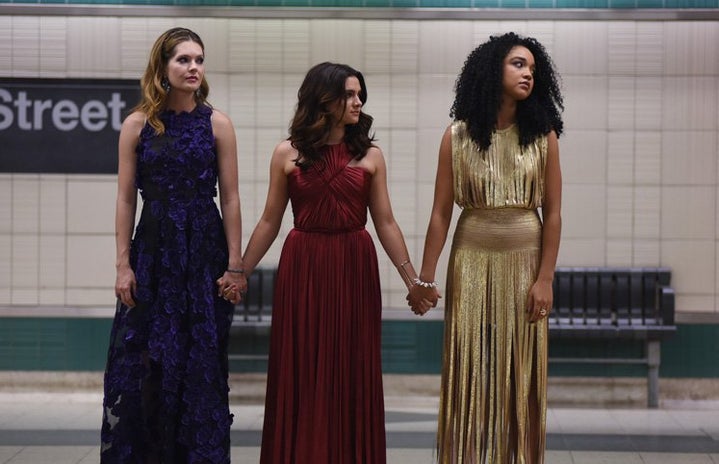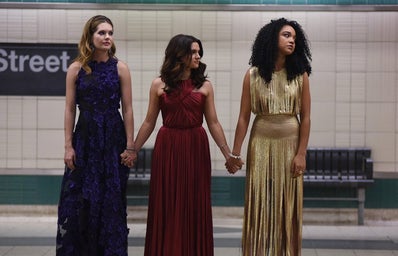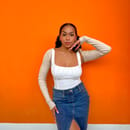Before starting school last fall, I hadn’t realized how much of my time school and extracurriculars consumed. I barely had any time for social life, let alone to find a show that interested me.
But last winter break, when I stumbled upon a show that’s premise interested me, I knew I had to give it a try.
After finally having the time to watch the show’s pilot episode, I knew that it had my attention and that I just had to continue it.
Streaming on Freeform, “The Bold Type” is based in New York City and follows the stories of three young women who work at “Scarlet” magazine: Jane the writer, Sutton the assistant, and Kat the social media department head. The viewers can easily follow along with their never-ending ups and downs while working at “Scarlet.” Although the plot was centered around the magazine’s trio, I realized how much I wanted to relate to the show, even though I was only a student wishing to work in a similar environment in the future.
If you want a show to get interested in, continue reading to see just what “The Bold Type” has in store.
The strengths of “The Bold Type”
From the beginning, “The Bold Type” had protagonists that remained strong in mind and heart, and that continued throughout the whole show. The perfectly imperfect trio—Jane, Sutton and Kat—felt authentic to watch. In other words, I always felt that their characters were so easy to relate to. Although they were professional at the magazine headquarters, they were still just normal women dealing with problems of their own and learning to navigate them throughout every episode.
As someone who is often anxious about things that I can’t control, it was nice to see that Jane always found comfort in her writing. It was highly inspiring to see her tackle subjects like sexual assault in the workplace and learning to find yourself after a breakup, fearlessly bringing those topics to light on such a popular platform.
The show also was not afraid to tackle important issues such as sexuality, racism, double standards in the workplace and even the process of seeing a loved one go through cancer.
“The Bold Type” is all in all an excellent show for an “inside” perspective on what it is like to work at a magazine, and, if you are like me, it all just seems like a big dream that one can only hope comes true.
However, although the show does capture many great moments of friendship, activism and a “dreamy” work environment, it does have its flaws.
The flaws of “The Bold Type”
Although some aspects of the show are realistic, it is still a fictional show that depicts very false aspects of working within a magazine.
First things first, the bond between Jane and the magazine’s editor, Jacqueline, is close, almost like that of a mentor and a mentee. Jacqueline is always eager to give Jane advice about her articles and how to approach several situations. However, as nice as that kind of relationship with your boss sounds, it isn’t always the case in real-life work environments.
As said by Rachel Syme in “The Tough Issue ‘The Bold Type‘ Won’t Tackle,” “Increasingly, young writers I meet [usually] crave mentorship more than anything, and they don’t know where to find it. … I have editors I love and trust now, but those relationships have been forged through the steady work of a career, rather than being the propulsive force that launches a writer upwards through the ranks. The television magic of ‘The Bold Type’ makes me wistful but for the mentors that I ached for and never had.”
The relationship does seem perfect, but it’s just unrealistic.
Furthermore, the way the characters live up to the show’s title is reassuring since they are bold with their daily choices both in and out of the workplace. However, such a thing, again, is nonsensical at times throughout the show.
Whether or not the characters chose to be educated on a topic was inconsistent throughout the show. The main characters would preach about inclusivity and encouraged Kat, a biracial and bisexual woman, to embrace her ethnicity. However, just episodes later, Jane got upset that she was not hired for a job due to the company wanting more diversity in their department. Although that feeling of rejection is expected, the way she continued to go on about the topic of diversity with her colleague seemed entirely confusing. It was odd for someone who had written about inclusivity to feel that way, and it immediately made me feel conflicted about whether the character was genuinely uneducated on the subject.
Although the show did have its flawed moments, it only made me more intrigued about the magazine workplace atmosphere.
“The Bold Type” is a show that I would recommend to anyone who wants to pursue a career in magazine publications, social media or even fashion. Of course, the only thing to keep in mind is that as lovely as it seems, it’s still a fantasy.



